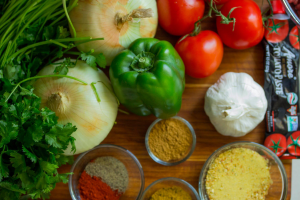 Umbria, called the green heart of Italy, with its Etruscan roots, entwined in its culinary tradition, hides a number of gourmet treasures. It is located in the central part of the country and is surrounded by the neighboringregions Marche – to the east, Lazio – to the south, and Tuscany – to the west.
Umbria, called the green heart of Italy, with its Etruscan roots, entwined in its culinary tradition, hides a number of gourmet treasures. It is located in the central part of the country and is surrounded by the neighboringregions Marche – to the east, Lazio – to the south, and Tuscany – to the west.
The small Umbrian region has two provinces – the northern is Perugia, and the southern – Terni. The combination of Apennine foothills, beautiful medieval hilly towns and vast forests makes the region one of the most beautiful in central Italy.
Although Umbria remains overshadowed by the neighboring regions Tuscany and Laziowith regard to the international arena. However, there are many tourists who visit Umbria and who are overwhelmed by the incredible local cuisine.
Towns and villages such asOrvieto, Narnia, Norcia, Trevi, Amelia and Montefalco are known as producers of some of the best foods, olive oils and wines in Italy. In recent years, they have begun to attract the attention of fearless seekers of gourmet foods and products from around the world.
Umbria is also ideal for long walks in the local villages and towns where one can enjoy simple holiday decorations and holiday markets as well as coziness and beautiful sights all year round.
Since the region has a distinctive relief – half of its territory to the east is mountainous and the other half is hilly – the valley of the Tiber River and Spoletana valley. Moreover, Umbria is one of the few Italian regions that is land-locked. Precisely that combination of factors makes the cuisine of Umbria based mostly on meat and vegetables rather than on fish.
For centuries this has been a problem for local people, because most of the fish had to be imported, but very often the quality of that food product was poor and the price high. We must not forget that Italians are highly religious and the strictly observed Christian canons in the Middle Ages have forbidden the meat consumption for one third of the year. Therefore, the lack of fish has seriously affectedthe everyday life of the population of Umbria.
The vast Trasimeno Lake in the area of Perugia, which is capital of the region, is home of the Umbrian trout, which the locals fill with a mixture of butter, garlic and salt, then they prepare it in a pan on moderate temperature. There are other types of fish living in the lake – such as perch, carp, pike, eel, smelt and doctor fish.All they can be cooked or prepared as delicious stews, which in the region are called tegamaccio.
Still, Trasimeno can’t provide enough fish to feed the entire population. In the past, it was so difficult that once there was a law in force, according to which water birds were not considered meat – in order for the religious people to consume some kind of protein without going against their spiritual views. Even today, when things have clearly changed and fresh fish is available daily at Umbrian supermarkets, the local fish recipes are still relatively conservative and simple. The classic recipe for baked fish with bread bread crust is a favorite in both Italian cuisine at home and the restaurants.
We must note that Trasimeno Lake is one of the biggest lakes not only in Perugia but also throughout Italy. Moreover, it is surrounded by vineyards, olive groves and farming lands thanks to the fertile soil.
Bruschetti – there is nothing more simple and tastier than the Italian Bruschetti.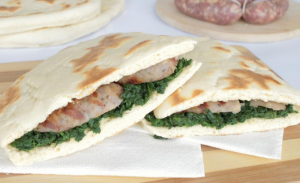
They are liked by everyone in Umbria and are served as an appetizer. They are finely toasted bread slices, covered with chopped garlic and seasoned with oil and a pinch of salt. The oil is the magic of the Umbrian bruschetti. In fact, around the hills of the region and especially in the region of Trevi, Spoleto, Assisi, Campellois produced the highest class of olive oil. It is even more valuable, given the fact that Umbria produces only two per cent of the national olive oil yields in Italy.
Torta al Testo
In the past this product was prepared as an alternative to the unleavened bread. Torta al Testo is a type of focaccia, made with flour, water, baking soda and salt. According to the tradition, after being prepared, the cook makes a spell on the dough. It can be consumed with fillings made of cooked vegetables or sausages, ham, stracchino cheese, and also can be used to dip in aromatic stews.
Lentils soup of Castelluccio di Norcia
Norcia (also called Nursia) is a small town in the province of Perugia, in Umbria near the border with Marche, and Castelluccio is a village near it with a population of not more than 200 people. Lentils there is delicious and with very thin pod, because it grows in the heart of the Sibillini Mountains, which have a unique nature and status of a national park.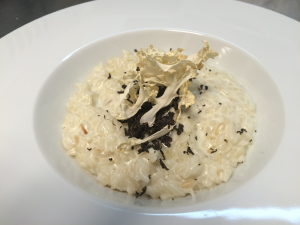
The local lentils that is with status of a protected geographical indication (PGI), blossoms every year for several weeks between May and July. This unique show of unique and exciting colors is worth seeing.
In addition to the fact that it brings opportunity to people from Norcia and tourists to enjoy the beautiful sights,the lentils here is used for the preparation of various dishes, as the most famous one is the lentils soup.
Norcia is also famous for its black truffles that are harvested mostly in the period between December and March. The region of Umbria harvests more black truffles than any other place in Italy.
Moreover, every year in Norcia a truffle festival is held– within the period between the last weekend of February and the first one of March. An extremely appreciated delicacy from ancient times, truffle was once considered a divine creation, gifted with the ability to act as an aphrodisiac.
Today, in Perugia and Umbria, they are used to enrich the taste of roasted meat, to flavor cheeses and sausages, mixed with eggs, shaped in dumplings, steamed with oil for pasta sauce or preserved in spreads, and also for the preparation of risotto. For a sauce, the truffles can be steamed with butter, but also with olive oil, adding a touch of garlic and anchovies to get the special recipe of Norcia for spaghetti alla Norcina.
But let’s not miss the „most common“mushrooms – chanterelle, an ordinary boletus and the Caesar’s mushroom with whose double was poisoned the Roman Emperor Claudius. It was the favorite mushroom of the rulers and that is why it is calleda „royal“ mushroom.
Norcia is famous for its love to pork meat. The vast oak forests of Umbria are rich in acorns and that is why there are so many pigs there. In addition, acorns flavor the meat very well, placing it at one of the leading positions in the country. Norcia is also well-known for its butchers. They are craftsmen with impeccable skills who can cut andfillet the meat better than anyone else in Italy. In addition to the meat, the fat of the animal is also actively used. Many of the recipes that are known to us that are prepared nowadays with olive oil, in the past have been prepared with lard. Wild pigs are walking freely in the more remote parts of the region, and the rabbits, dears and wild birds are highly valued both among the professional cooks and the home cooks. Fagiano all‘uva – a pheasant with grapes, is one of the emblematic recipes from Umbria. In the Norcia region there are also sheep breeders, but the lamb and sheep meat are not the bestsellers in the region, unlike the beef meat with PGI, which makes Perugia particualrly proud. Sausages are prepared from various high-quality meats in Norcia. Very famous are the pork norcini – one of the delicacies that make the town famous in Italy and beyond its borders as a gastronomic center.
Porcetti
Everywhere in Italy, you can find sellers of porcetti in vans, offering porcetti sandwiches – anywhere in Italy, but Umbria is the birth place of this delicacy. Perhaps that is why, to the present day, the region remains the best place in the country where you can taste this delicious food.
The dish is not easy to prepare – it includes one whole gutted pig, which is filled with chicken meat, a lot of salt, the dill, which is specific for Umbria, black pepper and garlic. The meat is rolled andtied carefully, then it is baked on a slow fire for several hours. Then the pig is cut and placed between two slices of bread.
The farmers who breed bovine and sheep have another emblematic product as their means of livelihood– these are the caciotta and pecorino cheeses – cheees made from cow and sheep milk respectively. Some say that the cheeses from the region of Umbria resemble its inhabitants – they are also simple, authentic and bold.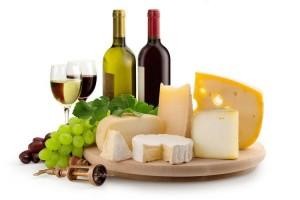
Pecorino also has the PGI status as its full name is pecorino di Norcia – this is sheep cheese that has matured for at least two months, or well covered, even underground on a pad with herbs. You can also try caciotta matured for only 20 days in order to preserve its sweet and creamy taste.It definitely goes perfectly with black truffles.
Even more fresh is the raviggiolo cheese, which can be prepared from cow‘s milk, as well as from sheep’s and goat’s milk. Emblematic for the area is also the salty ricotta. The local Umbrian cheeses are consumed with a glass of dry red wine or at the end of a meal just before the dessert.
Pecorino di Norcia is mainly used for grating on various dishes. It also can be prepared on pan – bread, seasoned with pecorino, walnuts and cedar nuts. The local Umbrian onion soup with tomatoes, salty pork meat, basil and grated parmigiano reggiano cheese is called chipolata. Another well-known soup in the region is minestra di farro, which is thicker and contains onion, celery and tomatoes, and finally is sprinkled with grated pecorino cheese.

We should note that Umbria and Norcia are located into the heart of an area with strong seismic activity. In the end of August 2016, the entire region, together with Marche and Lazio,was shaken by an intense earthquake with magnitude of 6.2 on the scale of Richter.
On October 30 that year, a new earthquake with even bigger magnitude – 6,6, hits Norcia. The town has once been destroyed almost to the ground – in September 1979, as the earthquake of5,8 magnitude caused huge damage and almost destroyed Norcia. Since the two earthquakes in 2016, Norcia is trying to regain the trust of the tourists with its culinary secrets.
Strangozzi
This is perhaps the most common type of pasta in Umbria and, depending on the particular province, it may also be called strozza prettiotumbrichelli. Strangozzi is a homemade pasta,very similar to tagliatelle, but the difference is that it doesn’t contain eggs and is shorter in size. It is served with various sauces of meat, fish and vegetables.
Sausages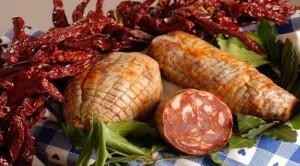
Undoubtedly, one of the most famous products that is associated with Italy all over the world. Mortadella in Umbrian style, lombetto, various sausages, ham. A sausage that is typical of the region is the meat salami in the form of a bag, called „coglioni di mulo“ – in translation means „donkey balls“.
Palomba allaghiotta
A dish prepared from a dove, black olives, wines and spices. In the winter months there is no house or restaurant in Umbria where this dish is not available. This is a traditional, rich dish, typical of the region.
„Perugina“chocolate
„Perugina“ is a historic Italian brand of confectionery products from Perugia. Some of its most famous products are „BacioPerugina“, candy of dark chocolate and pieces of hazelnut. The package of these products contains alsofortune slips and poetic phrases translated into several languages. Torcolo is a typical dessert of Perugia, which is its traditional form, resembles a donut. This is an extremely simple, but very famous dessert that is prepared with simple ingredients, as it is also produced in our country. In fact, its main ingredient is the most common bread dough.
The dessert ciaramicola is also typical for Umbria – a nice pink cake, seasoned with lemon and aromatic liqueur. Its dough contains eggs and lard. The glaze is prepared from broken egg whites with sugar and finally is sprinkled with colored sticks according to the traditional recipe. This dessert has become a traditional cake that is prepared every year in Umbria for Easter. In the Easter morning, the custom requires the women to serve ciaramicola to their husbands as a symbol of their love. Reddish and white, this cake praises the colors of Perugia.
Umbria enjoys a very well-preserved nature. The industry is not developed very much in this region, as the population per square meter is not big. This contributes to the fresh and clean air in the area, so this is favorable for the beekeeping craft and for the production of high-quality honey. Most of the production is of the bouquet type, but there are some single-flower honey types– from acacia, clover, sunflower, Hedysarum coronarium.
